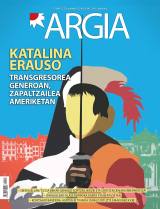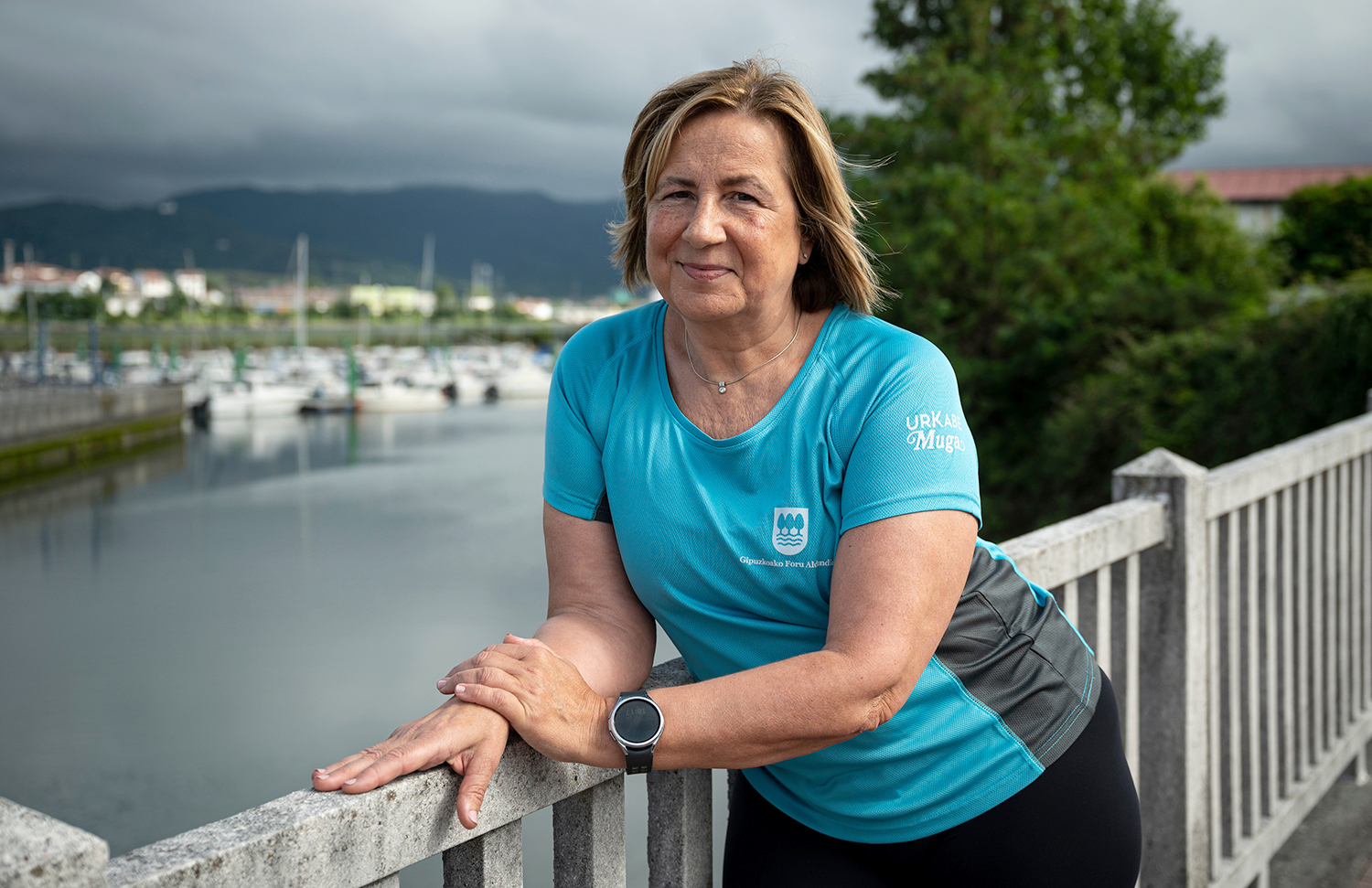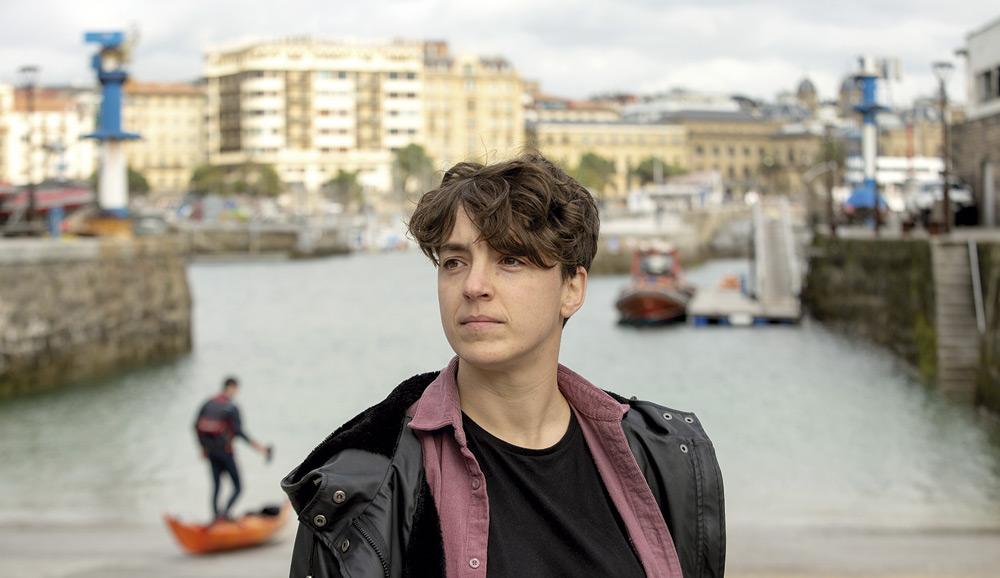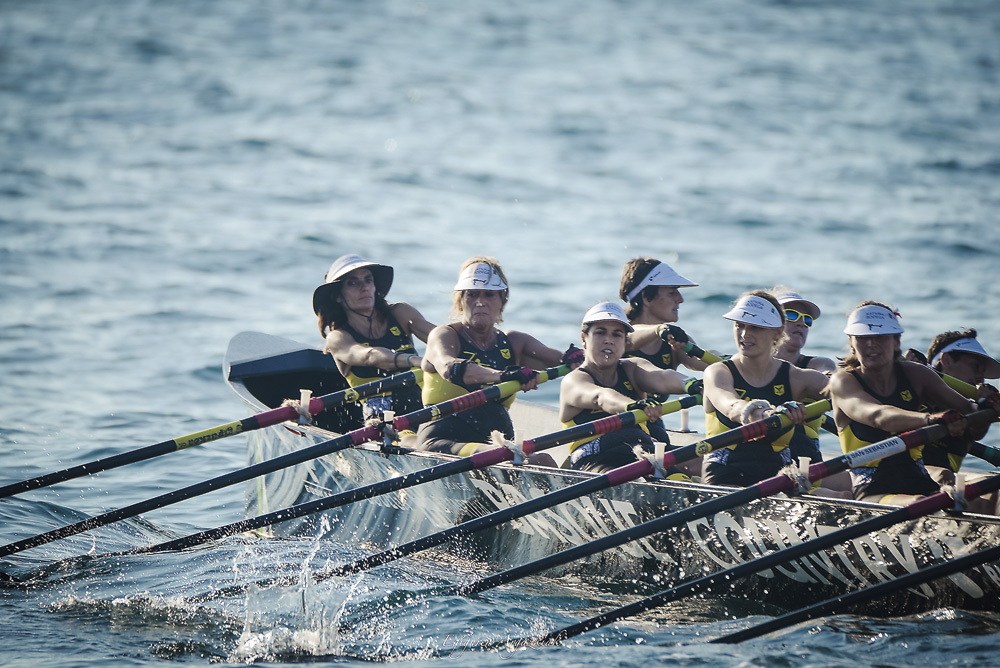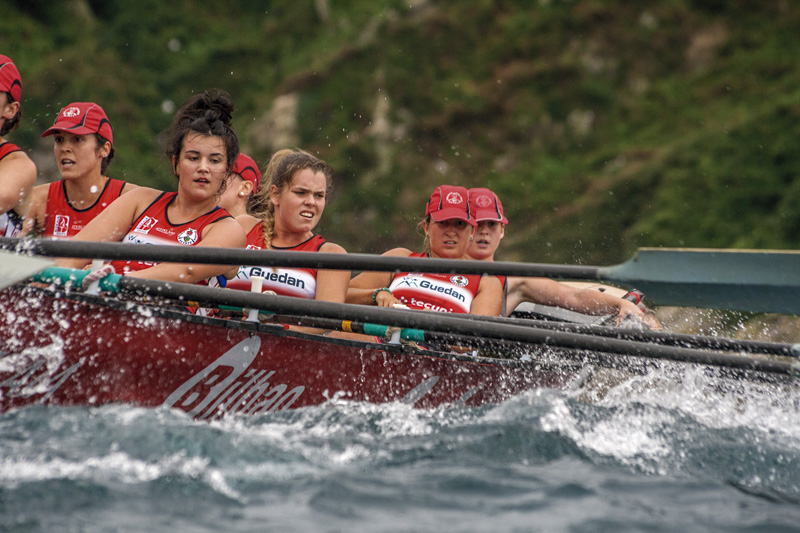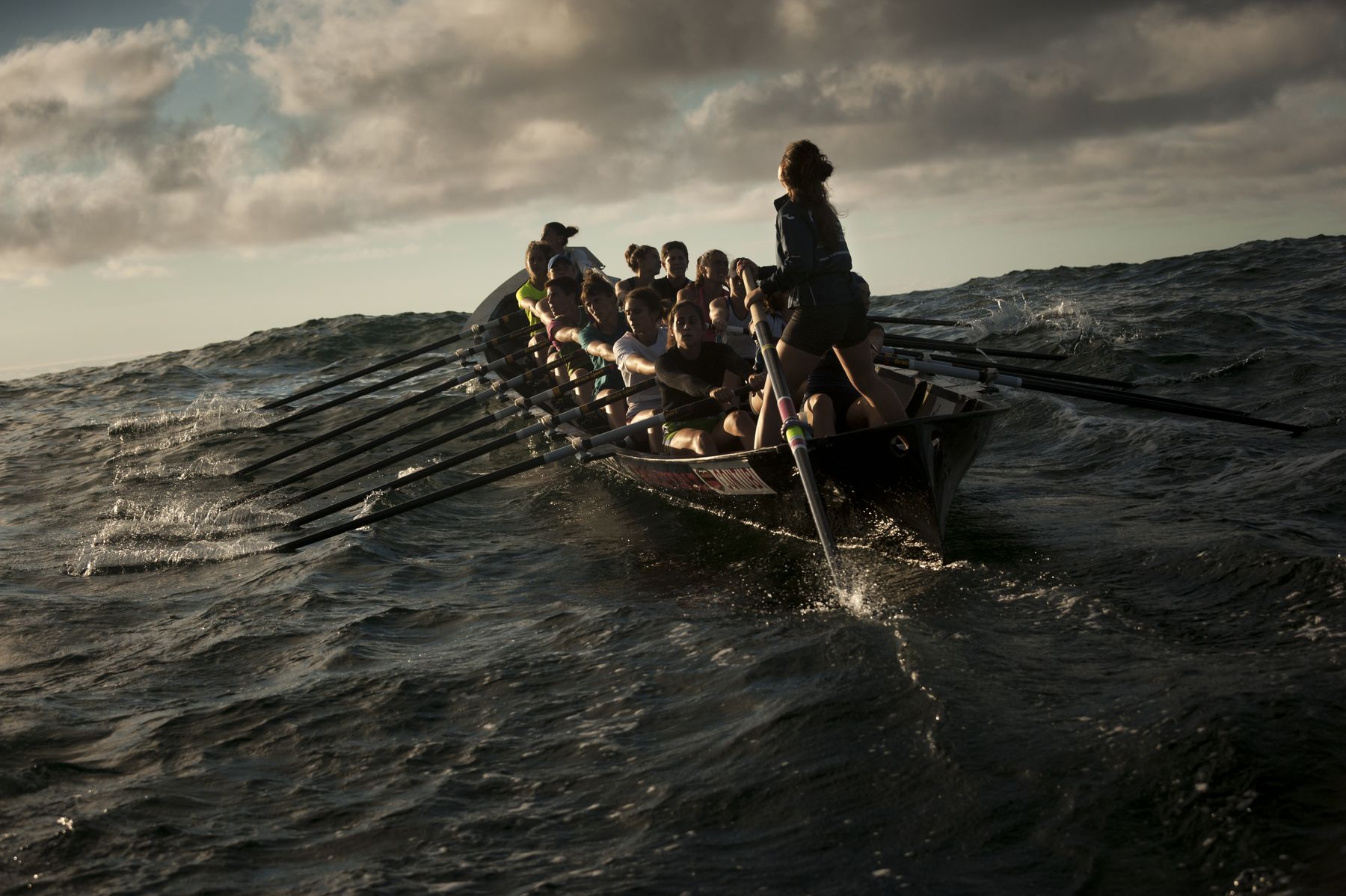On the road to equality, without a firm foundation
- Women first disputed the La Concha Flag in 2008. Then, in a qualifying regatta disputed on the eve of the second Sunday of September, it was decided what would be the four boats that took the first step: RIAS Baixas, Astillero, Getaria-Zumaia and Hondarribia have been the most successful traineras. Then came the chance to play two Sundays. This year will also be, but with a novelty: eight traineras have won the ticket for the first time.
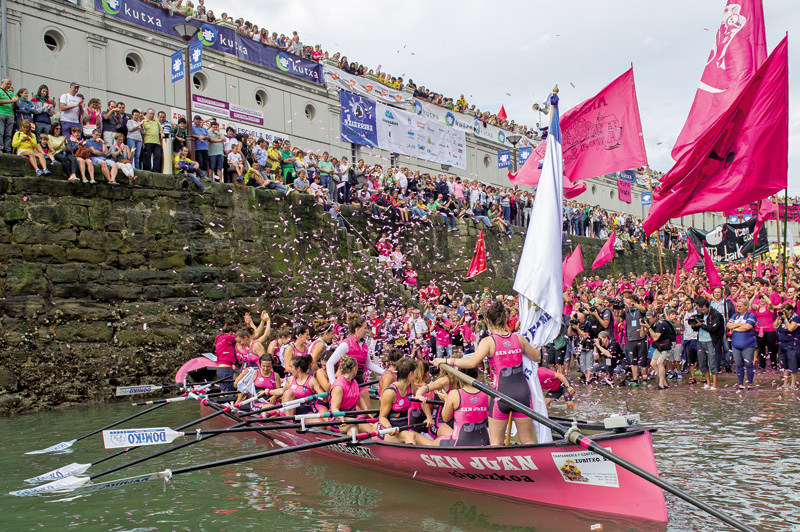
The organizer of the La Concha Flag, Donostia Kultura, made official last June what until then was on everyone’s lips. In order to “take a step further” to boost the female rowing, on the first two Sundays of September it decided to increase the number of female vessels competing in the Bay of San Sebastian from four to eight. Although the intention of the organization was known, the decision gave much to talk, even among the rers. Look at Iriondo (Deba, 1994) at Orio's trainee, and says that the decision has been taken too soon: “Today there is a lot of difference between boats. With eight classifications, competition is reduced. San Juan and Hibaika, for example, can relax in the qualifying regatta, as they know that even if they do it very badly they will leave two behind.”
Look at Iriondo, Orio's replacement:
“Today there is a lot of difference between boats. With eight classifications, competitiveness is reduced”
Edurne Moreno (Donostia-San Sebastián, 1991), from Donostia Arraun Lagunak, is also aware of the difference in the boat level, but welcomes the decision: “Knowing that the Flag of La Concha is the race that most spectators congregate, it seems to me that the measure can give visibility to the female rowing. Above all to know that we are more than the four boats that play in the Euskotren League”. As in the male category with the Club de Remo Kaiup-Donostiarra, Moreno and his teammates are already classified, that is, the trainera donostiarra Lugañene. In the next editions, if in addition to this trainera there were other boats of the city, a ranking race would be disputed between the two traineras, as well as in the male category Ur Kirolak and Arraun Lagunak.
Irati Iñarra (Pasai Donibane, 1993) coincides with Iriondo: “It can be beneficial to some, but to others it can only hurt them, because the rowing partner who is far behind can lose the illusion for the rowing. That's dangerous." Iñigo knows what this is all about: in the last two years he has won the Flag of La Concha thanks to a rowing on the Batelera boat, but in the rowing he has generally suffered “more defeats than victories.” In fact, in the first five editions, the Galician vessels were imposed in the Bay of Donostia by an absolute majority. Zumaia was the winner in 2013, and in the last two years, the Pasai Donibane trainee, to which Iñarra belongs. This year they want to win the third.
Although each trainee has increased their
number of traineras, Iriondo and Moreno do not believe that there will be a change in the head of the classification. “San Juan is the champion of the last two years and have proclaimed champions of the Euskotren League. They're the big favorites." However, there is not much chance of relaxing, “because as has been seen during the summer, Hibaika leaves them on top to account,” says Iriondo. He stresses that they are also going to walk ahead, but does not believe that they are able to reach the height of the two boats: “We see the flag away, the truth.”
Edurne Moreno,
Donostia Arraun Lagunak replacement:
“Knowing that the Flag of La Concha is the race that most spectators congregate, the measure can give visibility to the female rowing. Above all to know that we are more than the four boats that play in the Euskotren League”
As Iriondo has explained, in recent weeks they have tried to join more rowing and have changed the train: So far, the boat built by the engineer Iñaki Lasa has been used as a test, based on the characteristics of the women. In recent weeks, however, he has been parked: “Coach Santi Zabaleta realized that it doesn’t make much difference to the Txiki we had before in society, and we’ve taken it back.” Now, Hibaika has taken over the Branka test, and it seems that it does nothing wrong: in the first race used, in Colindres (Cantabria, Spain), he got the flag with 15 seconds advantage over the second.
Moreno has recognized that they are inferior to the traineras who have participated in the Euskotren League (San Juan, Hibaika, Orio and Cabo) and that they have other plans on the Concha Flag: “We want to give a push to Donostia’s women’s rowing, if possible, on the honourable course.” It indicates that it is a matter of going over a year. In fact, in Arraun Lagunak.
The boat has been in the sea for only two years.
This year they have only participated in the Gipuzkoa League – they were unable to qualify for the Euskotren League – but since last year they have noticed this improvement. Not in vain, on 16 July they got the first flag of history for the female trainee of Donostia, in the counterclockwork played in Orio: “With the absence of boats from the Euskotren League, opportunities are open to us, and between Getaria-Zarautz and us a nice competition is created. We win at Orio and they win at Zumaia.”
Although the number of traineras
competing in each category has been equalized, the amount of money distributed through the prizes will remain different. In the female category, the winner will embed 12,000 euros, a quantity that will be reduced according to the classification; the eighth ranked, 3,000 euros. Nothing to do with what men receive: In total, prizes of between EUR 24,000 and EUR 5,000 will be distributed in cash prizes. To this must be added the special prize awarded this year by the employers' association of Gipuzkoa, ADEGI, which will award 5,000 euros to the Gipuzkoan trainee who has obtained the best time in both days, both in the female and male category.
Irati Iñarra, remera
de San Juan:
“There is still much to be consolidated in the rowing of women. There are many changes to be made, and we have to do so over the years, discussing it with serenity. Deciding things at once is of no use.”
For Iñarra “there is still much to consolidate” in the rowing of women, and this is another example of it: “With the decisions that are made at every moment it is difficult to achieve the necessary force. By way of example, the winner took the first EUR 8,000 and last year he rose to EUR 12,000. It’s welcome, but I don’t know what the criteria are for these changes.” According to the San Juan Rower, the fact that they play a 2,778 meter race, in which men double, has to do with the size of the awards: “That will also have to be looked at. There are many changes to be made, and we have to do so over the years, discussing it with serenity. Deciding things at once is of no use.”
Moreno also sees the need for change, also with regard to prizes: “The argument they give us is that they allow us to compete by making the way easier, but that money is something else.” Lugañen's toaster believes the situation is "shameful," but does not believe that the rowing will change as long as society is wrong. Some of us have to pay to row, while others charge large amounts.” Although the distance between the two is decreasing, male trainees still maintain a wide difference of boats.
Getariako Izaro Lestayo gizonezkoen arraun ligetan aritzen den lehen emakumezko patroia da. Donostia Kulturak adierazi du Kontxako estropadan ezin izango duela parte hartu.
At first, by the time it was rainy, Miguel Strogoff thought it was great. They were installed on the roof of the sports club to spend the mornings in the new and colorful machines. For the second week, someone told him that the walking machine, a stone mill that could not be... [+]
40 urte betetzekotan ziren eta modu berezian ospatu nahi zuten urtebetetzea. Bazkaria? Asteburu pasa ez dakit non? Ez, beste zerbait izan behar zuen, harrotasunez gogoratuko zutena, barrukoa, beharbada betiko amets bete gabea.
Aurtengo Donostiako Estropaden bigarren igandean, emakumeak erlojuz kontra bota zituzten uretara itsasoaren baldintza bortitzek “behartuta”. Gizonezkoak, berriz, tradizio sakratuari eutsiz, launaka bi txandatan.







